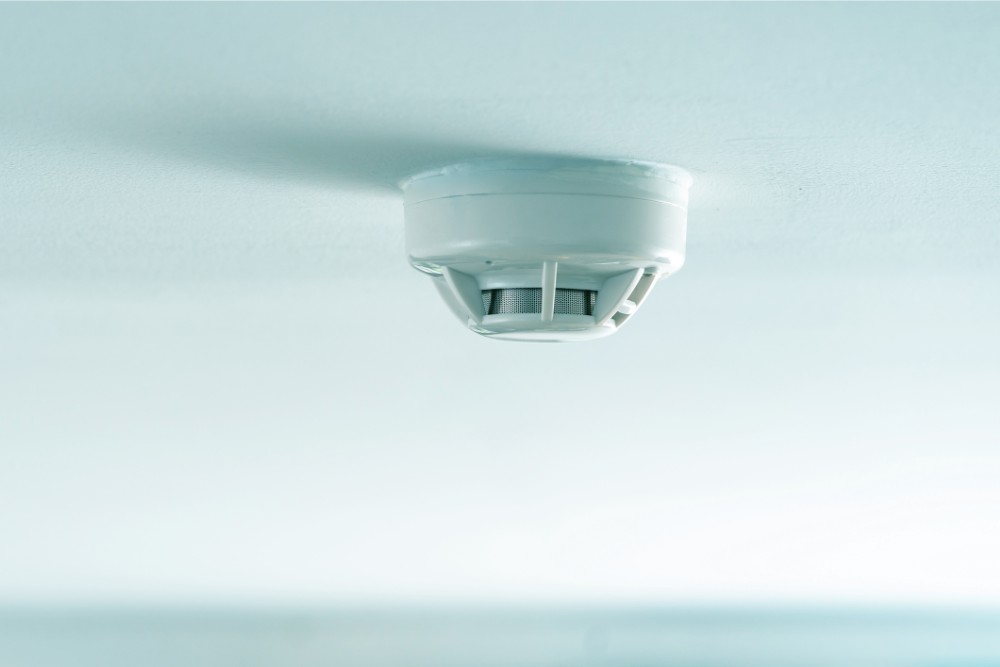Which type of fire alarm system is right for you?


Fire alarms and smoke detectors are quite discrete (that is when they’re quiet). A small white device fitted to a ceiling or wall which goes unnoticed. You may be surprised to learn that not all fire alarms and smoke detectors are the same though. Here’s what you need to know about each type:
- Ionisation alarms
- Optical/photoelectric alarms
- Heat detectors
Ionisation alarms
Smoke detectors with ionisation chambers for trigger mechanisms were industrially produced in the 1970s, becoming a standard feature in all buildings. 91% of households now owning a working smoke alarm. Before this time, in the earlier 20th century, fire alarms were huge devices reserved for important facilities, triggered by primitive heat detection.
What distinguished these new alarms from previous designs was the dependable and high sensitivity of the ionisation chamber, which could be cheaply produced. A small sample of radioactive americium-241 is placed between two electrodes, creating a steady flow of electrical current in the air between—when smoke particles disturb this air, the current dips and the alarm is triggered.

A common complaint of ionisation alarms is that they are too sensitive. It’s not uncommon for well-done toast, which produces fine and barely visible smoke, to set off a false alarm. Despite the nuisance in kitchens, ionisation alarms are indispensable in buildings at risk of a spontaneous flaming fire; these aggressive fires generate fine smoke which other detectors are less responsive to. On the other hand, ionisation alarms can be unreliable in detecting large smoke particles generated by slow, smouldering fires which are more common.
Optical/photoelectric alarms
The counterpart to ionisation alarms was designed shortly after their widespread adoption. Optical, or photoelectric alarms, were a natural response to the question: If our eyes can see big smoke particles from smouldering fires, why can’t a smoke detector be built on the same principle?
By aligning a consistent light source near some photocells (which sense light), it would be easy to detect changes in how the light is scattered—particularly in the presence of visible smoke. This mechanism also came with the upside that optical triggers were less prone to the false alarms which well-done toast lovers had become accustomed to. There is also something to be said for the lack of radioactive materials required in this design!
Typically, optical alarms are the basis for detection in the majority of rooms and settings where the most likely sources of fire come from electrical cables and overheating appliances.

Heat alarms
There is a distinction between ‘fire alarm’ and ‘smoke detector’. Where a fire alarm detects fire by any means, a smoke detector always detects airborne particles. This brings us back to the original fire alarms originally used in the late 19th century: heat detectors.
Modern devices are available affordably and in compact size just like regular smoke alarms, and often are used as part of a wider fire safety strategy which includes smoke detectors. By measuring the air temperature with a thermistor, an alarm is triggered once the threshold is passed (usually 57°C –60°C).
Heat detectors are often used in garages or kitchens where smoke particles would frequently cause false alarms, but where a fire risk should still be monitored. They are not suitable as replacement in most rooms however, as fire is best caught in the early stages which smoke detectors are designed for.

Which is right for me?
The right type of fire alarm system for you depends on a variety of factors. Each business or facility has a unique set of fire hazards which will be identified as part of a fire risk assessment. Your fire alarm system will be factored into any fire safety plans. ISE Fire can also maintain, replace, or install suitable fire alarm systems, with options for interlinked systems which cover large workspaces and distributed facilities.
Index